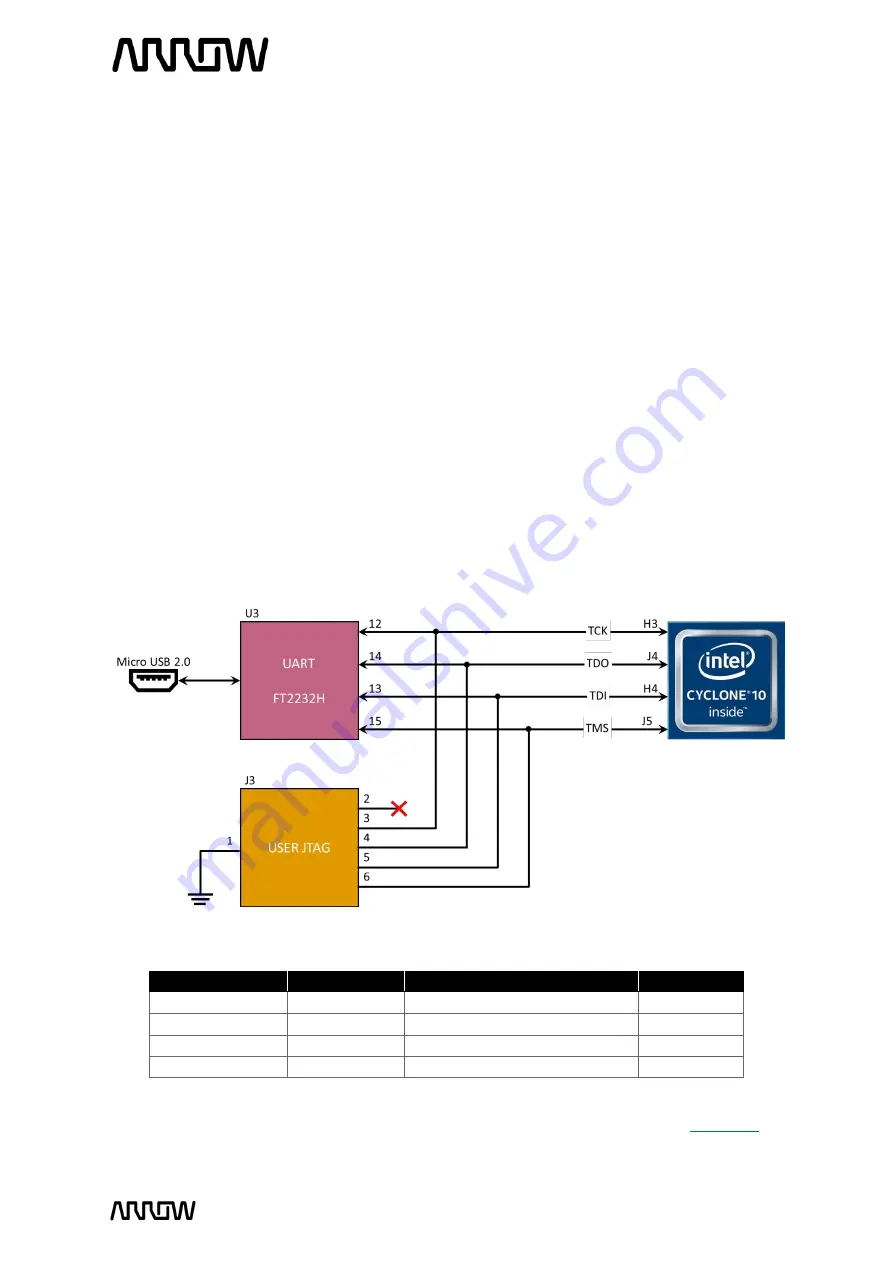
CYC1000 User Guide
www.arrow.com
Page | 18
January 2020
3.3.9.2
JTAG Chain Configuration
There are two types of configuration methods supported by CYC1000:
1.
JTAG Configuration:
configuration using JTAG ports. JTAG configuration scheme allows you to
directly configure the device core through JTAG pins (TDI, TDO, TMS and TCK pins). The
Quartus Prime software automatically generates a .sof that can be downloaded to the Cyclone
10 LP with a download cable through the Quartus Prime Programmer.
2.
Configuration from EPCQ-A flash:
configuration using external flash. Before configuration,
you need to program the configuration data .jic into the configuration flash memory (EPCQ-
A) which provides non-volatile storage for the bit stream. The information is retained within
EPCQ-A even if the CYC1000 is turned off. When the board is powered on, the configuration
data in the EPCQ-A is automatically loaded into the Cyclone 10 LP FPGA.
The FPGA device can be configured through JTAG interface on CYC1000, but the JTAG chain must
form a closed loop, which allows Quartus Prime programmer to detect the FPGA device.
CYC1000 offers two ways of configuring your board.
1)
Through the on-board Arrow USB Programmer2
2)
Pins for connec
ting user’s preferred JTAG interface
Board Reference
FPGA Pin No.
Description
I/O Standard
TCK
PIN_H3
Test Interface Clock
3.3 V
TDO
PIN_J4
Test Data Out
3.3 V
TDI
PIN_H4
Test Data In
3.3 V
TMS
PIN_J5
Test Mode Select
3.3 V
For detailed information about how to configure the Cyclone 10 LP, please refer to
Figure 14
–
JTAG Connections















































